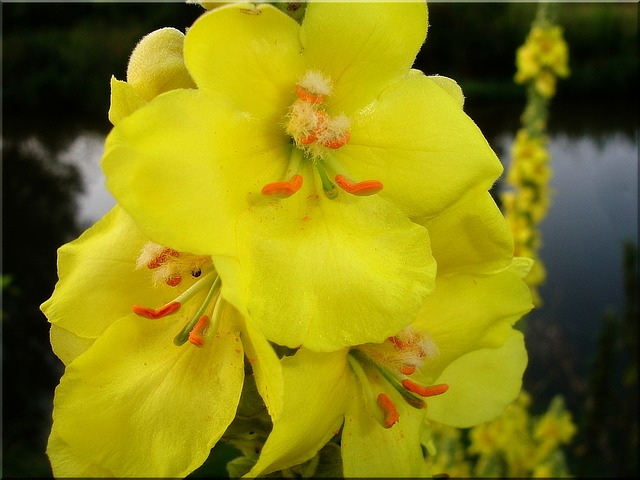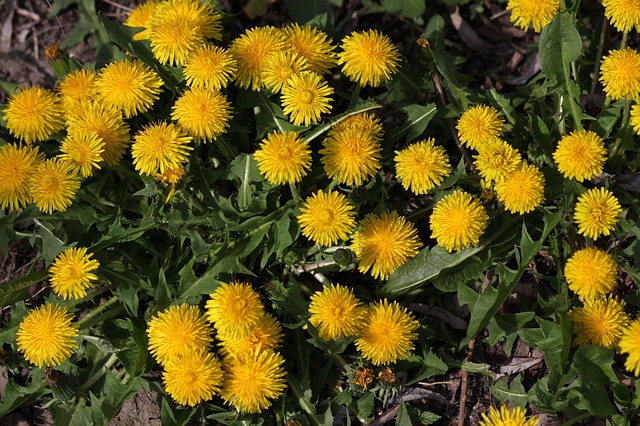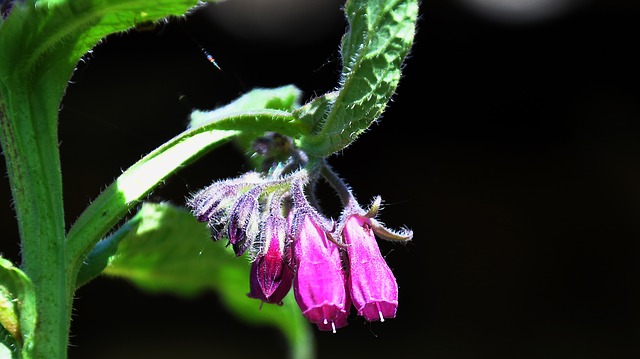For many a homesteader or gardener, weeds can be a major topic of conversation. They should be—but maybe not for the reasons you think!
I’m not talking about eradication or even control of noxious or unwanted plant life. What I’m referring to is listening to what the weeds are telling us. Now, that is a conversation that can really go places!
You May Also Enjoy:
“Dandelions: 31+ Uses for the King of Weeds”
“Sheet Mulching: Build Soil, Thwart Weeds, and Make Your Garden Fertile”
No, I don’t mean to the loony bin. (The weeds aren’t actually talking to you, even though you may be cursing them!) Where I’m going with this is toward observation and interaction.
Many weeds indicate deficiencies in the soil makeup or structure. For instance, dandelions and most thistles are indicative of compacted soils. You can literally tell what is wrong with your soil by looking at what wants to grow and thrive there.
Weeds: Symptom & Solution
I’m sure this doesn’t really come as a surprise to a lot of people, but my next bit of illumination might.
Get this: The same weeds that indicate a problem in the soil-sphere are also the ones that can fix it!
The same compaction that is indicated by the presence of dandelion and thistle is also being broken up and relieved by those very same plants with their deep burrowing tap roots. And that’s just the tip of the iceberg!
Many of the weeds that thrive in iron-deficient soils also accumulate iron, and so on and so on.
Lots of the most obnoxious weeds the typical gardener faces are armed with impressive tap roots. This makes them a serious pain to get rid of by simply pulling them out of the soil, as little chunks of root get left behind and new plants emerge. This leads the average Joe with nothing left to do but resort to a chemical cocktail that decimates the underlying soil biology and kills the plant and . . . only to have it re-emerge later.
Remember, the problem still exists whether we let nature fix it or not. What I say is, toss that Chem-Ag juice and work with nature to actually cure the underlying problems with the soil, instead of treating the symptoms. (And, of course, in this case the symptoms can also be the cure. Just look at my article on how I’m combating Canadian thistle for more!)
You May Also Enjoy:
“19 Remarkable Benefits of Stinging Nettle”
“Turn Your Weeds Into Fertilizer!”
Observe the weeds you have flourishing in your system. Listen to what they are telling you about your soil. The answers are there!
If you are not willing to let them run their course and correct the deficiencies on their own (which I totally get … a brother needs some tomatoes this season, not a bunch of dandelions for the next 5), then you’re going to have to do the weed’s work!
Helping the Weeds With Their Work
There a few different ways this can be accomplished.
The first thing that might come to mind is to physically alter and amend the soil so that the problems with the soil can be corrected. Think in terms of tilling, sub-soiling, broadforking, fertilizing, mulching, and importing mineral amendments to add to the soil. This can get very costly and labor-intensive on a large scale, though.
The next option would be to utilize intentional plantings that alleviate the problems with the soil to remedy the deficiencies. Planting something like daikon radishes in compacted soil or strawberries where the soil is iron-deficient could help alleviate thistle problems and net a yield. Similarly, legumes, clovers, or alfalfa will add nitrogen to your soil. Be creative, as there are many cultivated plants that have soil remediation analogs with weeds.
In the permaculture world, these are often referred to as “dynamic accumulators.” The plant will mine minerals and nutrients from deep in the soil layers and bring them to the surface in the form of leaves and fruits.
The deposited leaves, etc., from these plants will have concentrated levels of the deficient soil element, which then becomes available at the surface for other more desirable plants.
Comfrey is the classic permaculture dynamic accumulator.
Most permaculturists don’t consider dandelion or plantain to be weeds, and will actually encourage their growth because they are dynamic accumulators.
Many types of thistle are also in this category, as are mullein and stinging nettle. On a homestead or larger scale, if a person can spare that particular piece of land for a few seasons, the problems will be alleviated and the “weeds” will eventually be pressured out through succession. In the meantime, thistles and nettles make pretty darn good fodder for livestock and many “weeds” can be marketed as valuable medicinals should you want to add that to your income stream.
The bottom line is that weeds can be an ally in the quest for truly awesome soil that will grow literally anything your climate and heart will allow.
It takes patience, perseverance, and trust in the fact that the natural systems set in place by our Creator are resilient and restorative. We just need to observe and interact appropriately with our environment, then emulate those natural systems, and the answers to our problems will present themselves in due time.
Most often those answers are embarrassingly simple … like letting the weeds accumulate nutrients and resolve the soil deficiencies!
What Do You Think?
What do your weeds say about your soil? What are your experiences with letting the weeds resolve deficiencies? Let us know in the comments section below!
_______________
This is an updated version of an article that was written by Community member Dave as a submission in The Grow Network’s Fall 2015 Writing Contest. The author may not currently be available to respond to comments, however we encourage our Community members to chime in to share their experiences and answer questions!










COMMENTS(18)
Thank you so much Marjory, for all your hard work and wonderfully expansive wisdom and experience to help us take good care of ourselves in the most safe and healthy way. I love your writings and info. I plan to get more involved next season and plan to keep watching for preseason info too. Your site is a fantastic resource and inspiration to me.
As for weeds, I have a book that talks about the value and purpose of weeds, so I knew about this. I do have lots of dandelions and compacted soil. I love dandelions and eat them often! Have for years. I love the tiny buds clover puts out, they are delicious! Great to hear from kindred spirits and great teachers.
My garden Bad this year? Last year good? Planted early – looked good – big tomatoes. I fed and watered them – got yellow and black leaves. Peppers did the same – hot and green bells. Only thing that grew were my herbs, spices, and garlic did OK. Bad plants. Jeff
Hi Dave,
I live in Kansas and I really have come to terms with the local weeds. My garden: dandelions, milkweed, and thistle. For me, dandelion is kind of a leatherman weed. Medicinal, forage, and it does not proliferate if you leave it alone. Milkweed is kind of a pain, but the the butterflies love it. Thistle, you knock it down with a garden weasel, and very slow to come back. My problem for the last several years is the local wild grass. It has choked out my peas and green beans and beans for the last 3 years. I go out to my garden week-endly, pull it out by hand (it laughs at the garden weasel) and my yield is not commensurate with my backache. Any suggestions would be helpful. DZ
DZ
I’ve carved my current garden out of a chunk of hay field, mixed with native pasture, so believe me I feel your pain on the battle against grass. It can be a significant problem in the garden if left unchecked. Here’s my current favorite technique for dealing with grass in the garden….mulch the heck out of it! I pile on mostly hay, and straw 8 to 12 inches deep when I go to start a new bed. Anytime grass starts to push trough on goes another 8 inches of mulch. I’ve gotten rid of 90% of the grass growing in my garden that way. It’s essentially the deep mulch technique made popular by Ruth Stout back in the day. I’ve done a couple posts on specific beds I’ve established this way, along with a youtube video on my blog (www.traditionalcatholichomestead.com), just click the “MULCH” tag to pull them up if you want more info you can check it out there! BTW, thanks for all of the great feedback and comments on my article here folks!!!
Dave! You are the first to give me a confident answer to the grass question I have been asking for years ! I have a rhizome grass that over the past five years that I have been on my property has earned my grudging respect for unbelievable tenacity. Please confirm this is the kind of grass you have been dealing with before (this being the Northwoods and Thanksgiving week) I start pestering my farm neighbors for their spoiled hay. I took a look at your website, and will visit it often. Thank you for your practical perspectives!
Sandy, if your rhizome is what is called Johnson Grass in Tennessee,
if you can keep it from going to seed for 3 years those rhizomes will die out.
Still seeking information on eating those rhizomes, but can tell you that I have chewed on at least one of them and it is a very sweet root and I did swallow it, conclude that it must not be poison. As for the taste, not much to mention except sugary sweet.
This has got to be the most prolific weed next to kudzu. I keep praying that we will find some weed as tasty as tomatoes and green beans, but grows wild unbelievedly fast like this blessed grass.
Speaking of kudzu, did you know kudzu is edible. Haven’t tried it myself but read that you pick the new unfurled leaves and cook them
like asparagas. Also have found a recipe for kudzu blossom jelly. Been meaning to try that one, but so far have missed out on raiding someone else’s patch, and not anxious to get any started on my home – afraid it would soon have me having to machete my way out of my abode. The kudzu also has great medicinal purposes.
For those who don’t know already the redbud blossoms and seed pods are edible – haven’t seen anything on the rest of the tree but assume the leaves will also be edible. The blossoms are said to be delicious in pancakes and you pick the seed pods early and use them like snow peas in stir fries.
Establishing prairies can be quite a challenge. I normally carpet an area for a year to kill of all vegetation and then seed the area by scratching the soil very lightly. Invariably some weeds will come up. But within a few years time the deep rooted native plants will crowd out the weed roots in the soil and my problem is solved.
Ken
Here is a question that I have had for some time. I would suppose that this might depend upon the area in which one lives, the prevailing temperatures of the seasons, the type of manure being applied, etc. My main question is: Is there an appropriate time span after which manure, especially animal excrement, is applied to the soil before one should plant crops in that soil. My logic tells me that that will depend upon the activity of the microbes in the given soil for breaking down the constituents of said manure. Is there an approximate rule of thumb or recommendation for northern climates where the population of soil microbes may not be as plentiful? Thank you.
PS: I have found the articles by Marjory Wildweed… er I mean “craft”!, very interesting and enjoyable to read, but am still waiting to see how these Tarahumara fellows and/or girls(?) actually run their races. I would suppose it would be over their natural rough terrain?… Also I don’t recall reading what the altitude in their living area is above sea level and how dense or sparse is the oxygen in their air. Of course their races could vary in nature from the Boston Marathon considerably, where they might succumb to vehicle pollution before the end of the race! Thanks so much for your interesting website about getting back to Nature and living more healthfully.
ratreb short for rational rebel with my Karelian bear dog mix, SpiritBuddy
*********************************
Very good article, why should I be surprised that the earth will give us the answers if we just listen , observe and take heed… growing up mostly in the city(if you consider Phoenix to be a city), but having the experience of having a summer home in upstate NY, I have experienced a little of both sides…
and both my wife and I are slowly becoming “earth aware” and how all is connected….living healthier , etc.
I have been trying to use vinegar instead of feeding Roundup into the water and ground on our rock lawn… and now I understand why it isn’t working as well as my landscaper had suggested…
I am dealing with burmuda grass and its rhisomes… and now it all makes sense why it isn’t killing all of it…
so what can I use that will kill the roots, not just the leaves…
Hi Paul – Try dumping a pot of boiling water on the ground, in the areas where the grass is the worst. You’ll probably have to keep after it for a little while. This will also kill other plants, so be careful not to pour it on landscaping plants you want to keep.
thank you Michael, I will try it and let you know
I always considered my “weeds” native plants & let them grow & enjoy their beauty! I just mow around an area of “weeds” and let them be my flower bed!
We still mow the clover and other plants in our back yard, but it all comes back quickly and I get to watch the bees doing their job flying around from blossom to blossom. I have become much more accepting of what is in my yarden, but I’m still trying to figure out what to do with trumpet vine and Virginia creeper, not to mention poison ivy.
Great information. Thanks. We grew a garden in the same spot for a few years without properly returning nutrients to the ground. It was a prolific dandelion spot for several years after that.
When my weeds talk to me, they say, “Eat us! We are much better adapted to the climate and soil than those other things you are trying to grow, and many of us are nutritious and tasty.” Where I am trying to grow, in a community garden, I have dandelions, lamb’s quarters, wood sorrel, purslane, wild mustard, horseradish, peppermint, and mugwort growing wild, along with some other things that are probably not good to eat. I am not sure what all of them are saying about the soil, but I can never decide whether to pull them up or let them grow.
So true! Although my yard is smaller, the weeds give me so much information about what’s going on in my yard! When I moved to a different climate, I let everything grow so I could learn about them and the soil. I even learned a lot are actually free food (like purslane!) and encourage them also. Great article & important concept for us to reconnect with!
I have sandburs. Lots of sandburs. and sunflowers.
Sandy soil in 6b. What do sandburs do for my soil?? I can’t think of anything they do that is positive.